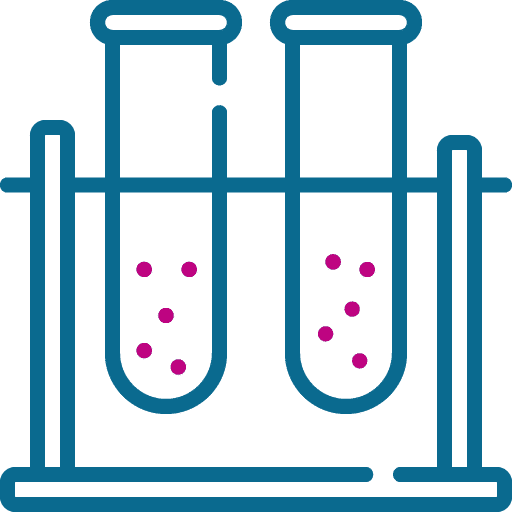Determination of blood group and rhesus factor
A person has a blood type: 0, A, B, AB and Rh positive or negative. Knowing your blood type is essential for blood transfusions, and should be determined before surgery and when obtaining a driving licence.

Determination of ABO blood group and Rh(D) factor
A person has a blood type: 0, A, B, AB and Rh positive or negative. Knowing your blood type is essential for blood transfusions, and should be determined before surgery and when obtaining a driving licence.
The rhesus (Rh) blood type is determined by a combination of several different proteins (designated C, D, E) on the surface of the red blood cells. The most important protein (antigen) used in Rhesus blood group testing is D. If the D antigen is predominant on the cell surface, the blood group is called Rhesus positive (Rh positive). However, variations in this antigen are possible and are not detected by routine laboratory tests.
Sometimes there are few D antigens on the surface of erythrocytes. This depends on the sequence of amino acids in the protein D chain, which determines how “deeply” it is embedded in the erythrocyte membrane and how much of it is visible on the surface. If the protein is low, it is called a “weak D antigen”, even though the epitopes (i.e. the peaks to which the antibodies attach) are unchanged. In the laboratory, the D antigen is not detected and an “anti D negative” result is obtained (or Rh negative blood type). In the European population, the rate is around 1%.
Sometimes the D antigen epitopes are damaged/depleted, although the amount visible on the surface of the erythrocytes is sufficient. Such D antigens are called “partial D antigen” or D variants. They are also undetectable by conventional testing methods and can lead to an “anti D negative” result (or Rh negative blood type).
All people with Rh-negative blood are considered rhesus-negative recipients, i.e. only Rh-negative blood can be received in the event of a need for a blood transfusion, regardless of the fact that they may have a weak variant of the D or D-altered antigen. However, if they wish to become a donor, i.e. to give blood to others, they will be subjected to additional testing, using other test methods to detect the presence of weak D antigen or D variants. Donors with these antigens are considered Rh-positive.
The AB0 blood group is determined by proteins on the surface of erythrocytes, otherwise known as antigens. They are denoted by the letters A and B. Depending on which group of antigens is present on the surface of the erythrocyte.
There are four blood groups:
- 0 (I) – when neither A nor B antigens are present on the surface of the erythrocyte;
- A(II) – when A antigens are present on the surface of erythrocytes;
- B(III) – when B antigens are present on the surface of the erythrocytes;
- AB (IV) – when antigens A and B are present on the surface of the erythrocyte.
It is important to know your blood type if you need a blood transfusion. Transfusion of the wrong blood group can cause life-threatening reactions.
You can consult our family doctors.



